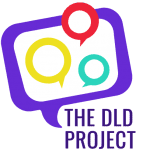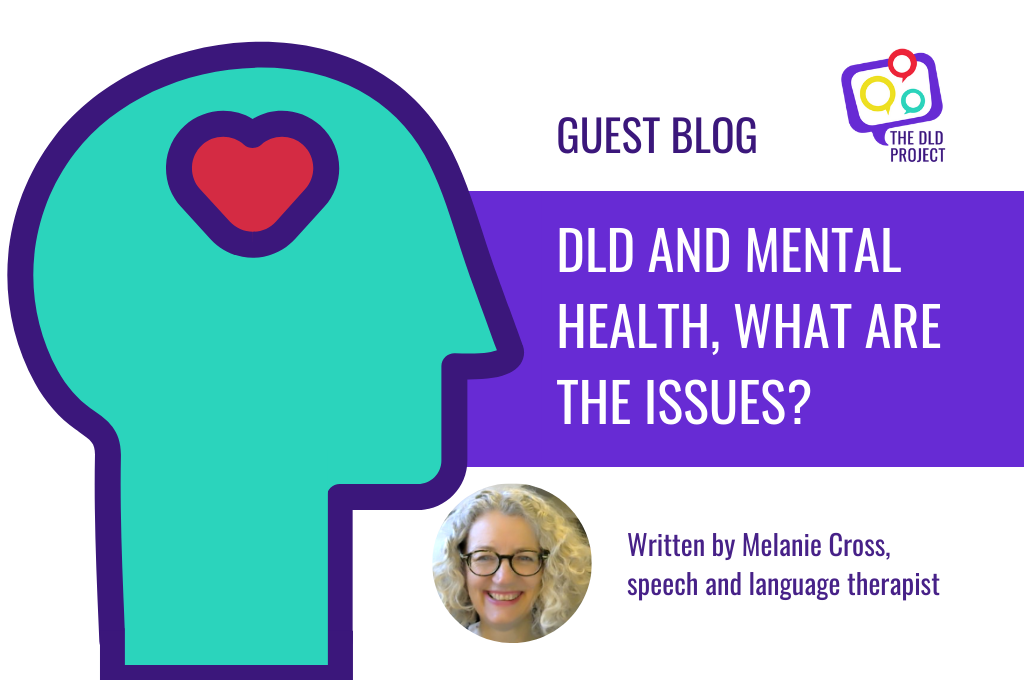Written by Melanie Cross | Speech and language therapist
Social Emotional and Mental Health needs (SEMH) are on the rise
‘Mental illness is the number one threat to the health, wellbeing and productivity of young people’ [i]. Even before the pandemic, mental health issues in children and young people were rising, perhaps because of increased awareness of and willingness to talk about such things, perhaps because of how we’re treating each other and the planet [ii].
Behaviour is a symptom, not a diagnosis, so any sudden change in behaviour might be an indication that a young person is struggling with their mental health. They might act out or be more withdrawn, or there could be changes in eating, sleeping or their ability to learn.
SEMH and unrecognised DLD/SLCN
When I started this work, I found research by Nancy Cohen [iii] and her team which showed that children with SEMH were likely to have unrecognised ‘language impairment’. I fully assessed the next ten young people joining the organisation (who were all care experienced/in out of home care) and 9/10 of them had significant gaps in their language skills, which had not been recognised before.
We’re still missing something!
It is a shame that more than twenty years later, it is still the case that many young people who have SEMH have unrecognised speech language and communication needs (SLCN) including DLD and that this still applies to young people in the care system . This is something that needs to change, and I’m glad to say that awareness of this issue is gradually growing.
Which comes first - mental health or communication issues?
The relationship between DLD/SLCN and SEMH isn’t simple and is probably different for each individual. If you’re a young person who has SEMH you are at risk of having unrecognised SLCN and if you have DLD you are at risk of developing SEMH. However, many young people with DLD are mentally healthy. This means having mental health issues is not inevitable if you have DLD, but that we should be alert to the possibility of it. Similarly, not all young people with SEMH have SLCN. So how come some young people with DLD are mentally healthy? Some young people are more prosocial (they want to help and share) and that seems to help them make friends, which we know supports mental health.
Also, a variety of factors could lead to both SEMH and DLD/SLCN. Some of these we can’t do much about, for example genetic influences, but we could perhaps do better at reducing Adverse Childhood Experiences and inequality? (I think it’s appalling that in a rich country like the UK for example, the need for foodbanks has increased by 128% in the last five years[i] ).
DLD can affect your whole life including your mental health
I was talking to some foster carers and social workers about unrecognised SLCN in SEMH and someone said, ‘I get it, ‘it’s like dark matter’. She explained, language is absolutely everywhere but we don’t really notice it. This is one reason why DLD and its implications can be overlooked, particularly in the context of SEMH.
If your mental health isn’t good, you may not feel like communicating and for young people this can mean they miss out on opportunities to develop their communication, interaction and emotional skills. Experiencing DLD itself can be exhausting and add to anxiety in ways it’s hard for the rest of us to understand.
Language is also important to explain what has happened to us and how we feel, as well as to understand what others say and their points of view. Young people might not be able to engage with mental health support because they don’t understand the language the (well intentioned) adults are using and it might be hard for them to use language to think things through. Adults often misunderstand young people with DLD (especially of course, if it is undiagnosed). A young person who doesn’t understand language well, might seem sullen and uninterested. Their bizarre answers might seem rude, for example, when asked ‘why are you here?’ if the answer is ‘I got a letter’ rather than ‘I’ve been feeling panicky and can’t sleep’, it’s easy for an adult to get the wrong impression.
How can we help?
Prioritise self care
A parent or caregiver is only as happy as their least happy child and it’s really hard to look after someone who is struggling with their mental health, so don’t forget self-care. Being a role model of this is very important. Showing your vulnerability (how much of this you do will depend on your role, of course) and talking about how you feel and what you’re going to do about it, can be very helpful. For example, ‘I’m just overwhelmed right now, and I can’t think, so I’m going for a walk.‘ We all need to remember that skills of resilience can be learnt[i], especially during tough times.
Resist jumping into problem solving mode
It’s also very easy to jump into problem solving mode because it’s often easy for us to see what a young person should do. We can be puzzled why they don’t just do it (!) but try to resist giving solutions. It’s better to start by really listening to the young person’s perspective and trying to understand their point of view. It’s hugely powerful to be really ‘heard’ and someone else’s empathy is often all we really need.
Once we’ve given them ‘a good listening to’, we can empower a young person to start to problem solve for themselves. Not telling them what they should do, shows them that you respect and trust them. It will also help them develop their own problem-solving skills and confidence in their ability to sort things out. Praise their efforts rather than what they achieve, this will encourage them to keep trying, phrases like ‘you can’t do it….yet’ can be very helpful . Obviously, we can provide practical help too, but if we wait till its asked for, it might be better received. Many skills are needed for social problem solving and that’s why it’s so hard, we may need to help fill some ‘skills gaps’.
Emotional coaching can be very helpful especially when its tentative. e.g. ‘I wonder if this is frustrating?’ Also, anything we can do to help young people build relationships is likely to be useful and of course parents are very important in this. [ii]
Language for Behaviour and Emotions (LFBE)
Often several professionals need to work together to produce holistic assessments and treatment plans for those who experience DLD/SLCN and SEMH. Families and young people should be at the heart of this process. Language for Behaviour and Emotions grew out of this kind of work. It is designed to help us find out what a young person’s strengths and needs are and it has resources to help them develop their skills in the following areas:
- Understanding language
- Emotional literacy
- Inference and verbal reasoning
- Narrative skills
- Social problem solving
Language for Behaviour and Emotions also includes information about how to create an emotion and communication ‘friendly’ environment. For many parents it can be reassuring to know that what they’re doing in everyday conversations is just what’s needed. We can all develop our skills too.
About the Author - Melanie Cross
Melanie Cross is a speech and language therapist who worked with Looked After Children for many years. Her work has focussed on developing speech and language therapy services for children and young people with Social Emotional and Mental health needs (SEMH). Melanie has worked with the Royal College of Speech and Language Therapists (RCSLT) to help develop their clinical guidelines on Social Emotional and Mental Health (SEMH) and the RCSLTs learning journey for practitioners working with children and young people who experience SEMH & Speech Language and Communication Needs (SLCN), Mind your words https://www.rcslt.org/learning/mind-your-words/ . She is also a freelance clinical supervisor, trainer, and a Video Interaction Guider and supervisor.
[i] A Global Framework for Youth Mental Health: Investing in Future Mental Capital for Individuals, Communities and Economies http://www3.weforum.org/docs/WEF_Youth_Mental_Health_2020.pdf
[iii] Cohen, N. J., & Lipsett, L. (1991). Recognized and unrecognized language impairment in psychologically disturbed children: Child symptomatology, maternal depression, and family dysfunction: Preliminary report. Canadian Journal of Behavioural Science/Revue Canadienne Des Sciences Du Comportement, 23(3), 376–389. https://doi.org/10.1037/h0079017
[iv] Hollo, A., Wehby, J. H., & Oliver, R. M. (2014). Unidentified Language Deficits in Children with Emotional and Behavioral Disorders: A Meta-Analysis. Exceptional Children, 80(2), 169–186. https://doi.org/10.1177/001440291408000203
[v] Clegg, J., Crawford, E., Spencer, S., & Matthews, D. (2021). Developmental Language Disorder (DLD) in Young People Leaving Care in England: A Study Profiling the Language, Literacy and Communication Abilities of Young People Transitioning from Care to Independence. International Journal of Environmental Research and Public Health, 18(8), 4107. https://doi.org/10.3390/ijerph18084107
[vi] https://www.trusselltrust.org/wp-content/uploads/sites/2/2021/06/State-of-Hunger_Exec-Summary.pdf
[vii] https://www.actionforhappiness.org/
[viii] Jensen de López, K. M., Feilberg, J., Baena, S., Lyons, R., Harding, S., Kelić, M., Klatte, I. S., Mantel, T. C., Novogrodsky, R., Ulfsdottir, T. S., Zajdó, K., & Rodriguez-Ortiz, I. R. (2021). “So, I told him to look for friends!” Barriers and protecting factors that may facilitate inclusion for children with Language Disorder in everyday social settings: Cross-cultural qualitative interviews with parents. Research in Developmental Disabilities, 115, 103963. https://doi.org/10.1016/j.ridd.2021.103963




